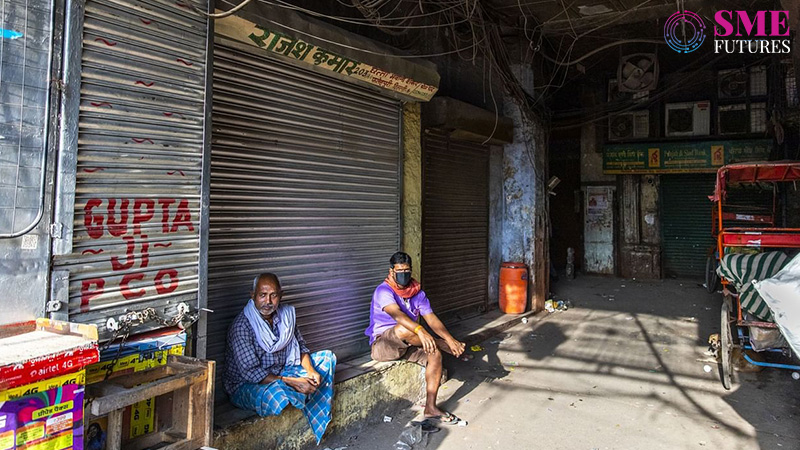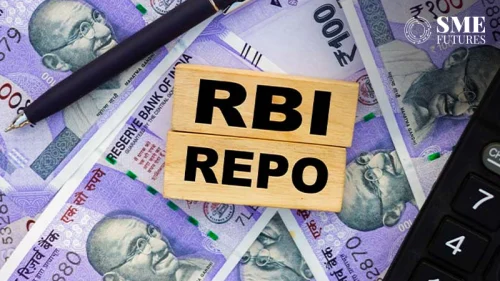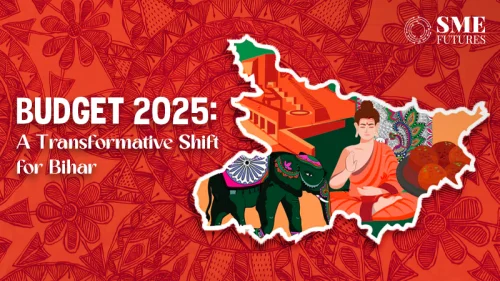Indian Inc. has lost around Rs.15 lakh crore in the last two months.
Now look at these figures.
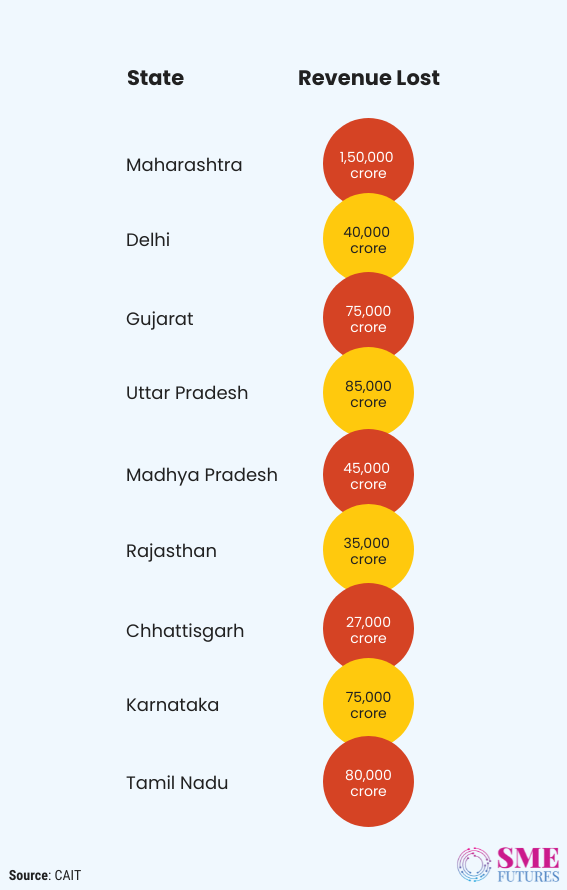
“Out of the total business loss of about Rs 15 lakh crore, the retail format has lost Rs 9 lakh crore while wholesale trade suffered a loss of about Rs 6 lakh crore” stated the Confederation of All India Traders (CAIT) in a recent statement.
In another latest survey, industry body FICCI and Dhruva Advisors, after evaluating the impact of the pandemic, stated that 58 per cent of the companies have been hit by the state level lockdowns.
While the Dun & Bradstreet COVID-19 business disruption tracker shows that as of the 3rd week of May 2021, 49 per cent of businesses were disrupted owing to COVID-19 related restrictions with 55 per cent of estimated sales revenues and 58 per cent of employees of associated firms being impacted as a result.
However, this is just the tip of the iceberg as this is only an estimate from various fora and the magnitude of the loss could be much greater.
Albeit due to the short and localised lockdowns, the revenue flow has been disrupted from the local supply chain to the manufacturing units.
“The second wave of COVID has been a lot more damaging,”
said Sanjay Vakharia, CEO at Spykar, a lifestyle brand.
Speaking to SME Futures on the implications of the second wave he says, “It has filled everyone with a lot of fear and anxiety, and I feel it’s going to be difficult for us to shrug off the fear and anxiety so soon, especially for the trader community. You may say that the opening up of businesses had happened earlier but for it to become normal, it will take more time than the previous year.”
Talking about the impact on his operations, Vakharia anticipates a headlong fall in sales due to the closures of malls and showrooms. “When we talk about revenue, we anticipate a drop of at least thirty per cent compared to what we had in 2019,” he said, adding that online transactions do not do much either to mitigate the losses.
“E-commerce is doing well though it also has its limitations and complexities. While it’s too premature to say if it can ever substitute for offline retail, it sure has its own patrons. Yes, it’s a welcome addition to the mediums of reaching out to your consumers,” he told us.
Financial losses are piling up for the traders
At the same time, if we only talk about the trading community, they are having a much harder time.
Down in the South, Mustafa, a bangle trader in Laad Bazaar, Hyderabad laments that he is worried about his pending bills and taxes. “Ramazan season gave us some hope, but now we are struggling again due to two months of lockdown. Despite having relaxation hours during the lockdowns, business went almost to nil. Now trading businesses like mine are unable to make ends meet,” he says.
According to the CAIT analytics, there are approximately 8 crore small businesses engaged in trading activities and directly employ about 40 crore people.
Speaking about the loss of Rs 75,000 crore incurred by Karnataka, the Federation of Karnataka Chambers of Commerce and Industry (FKCCI) declared that it would take two years for the industries to turn around the losses incurred due to the pandemic. According to the apex body, around 30 lakh people are now jobless in the state.
FKCCI president Perikal M Sundar, in a media interaction said that just when businesses had started gaining some ground, the second wave and localised lockdowns proceeded to wipe off their gains. “I fathom that around 30 to 40 lakh people have lost their jobs out of the 80 lakh registered employees, since the pandemic began. Given the difficulties faced by trade and industry, the government should consider allocating at least 10 per cent of the revenue which has been generated by the sector,” he said.
Similarly, coming to the North, the traders in the capital region, having faced a similar situation last year are exhausted after having to deal with their escalating financial woes once again.
Mahinder Aggarwal, President at All Delhi Computer Traders Association (ADCTA) tells us that since the last two months, the computers and electronics traders of Nehru Place have had zero business. “The entire Nehru Place was shut down as it doesn’t come under essential services. Amid these extended lockdowns, business has gone down to zero. The biggest question now is of survival and how traders will take care of their families when they are not able to work,” he says.
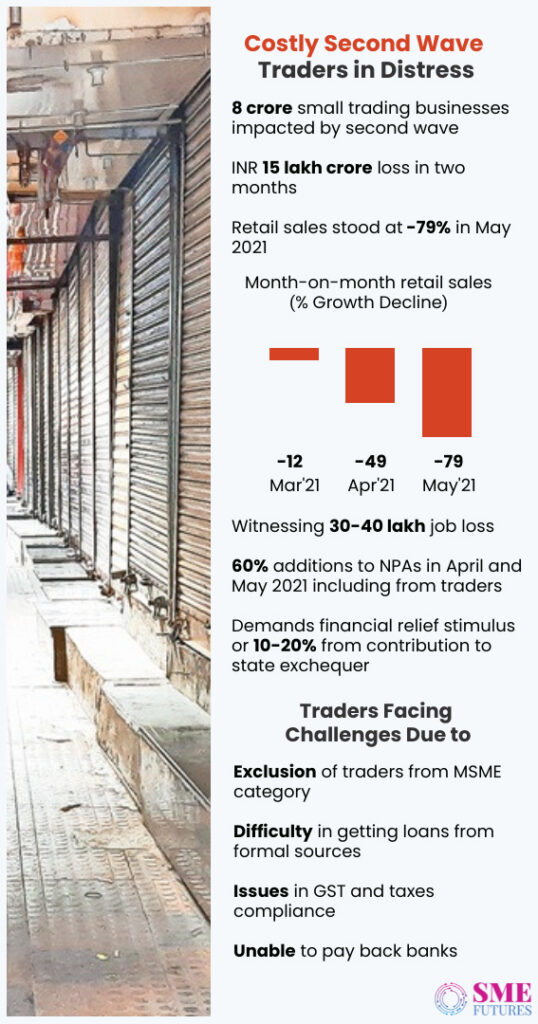
According to ADCTA, traders have been beset with several challenges from all sides.
“Most shops or showrooms are on lease or on rent in Nehru Place and due to the lockdowns, the traders have no earnings to pay the rents or even look after their families. Secondly, they are now dealing with issues such as large electricity bills, pent-up salaries of their employees and government taxes. Last but not least, income tax and GST compliance have become an issue for us. Many of them are not able to file the necessary taxes, and the deadlines for them seem short. Adding to our woes is the odd-even rule, as it is not of much help to us,” he says while explaining the plight of the traders.
Traders from almost all regions across the country are expressing similar sentiments.
Moreover, the hinderances that they are facing in their businesses are having a reciprocal effect on various other sectors as well. The price hike for raw materials and inflation are the after-effects that the industry players are dealing with. For instance, the meteoric rise in lumber prices has had an adverse impact throughout the markets, right from affecting paper manufactures and real estate construction work to sales.
According to Bhushan Nemlekar, Director, Sumit Woods Limited, the pandemic-induced spike in prices of essential raw materials and the shortage of supply with traders have emerged as a challenge for many developers across the markets. Many housing projects, which were resumed after the first wave of the pandemic, are likely to slow down again owing to this new raw materials crisis.
“The developer fraternity has been demanding a reduction in prices of the raw materials since the last few years. However, the government has not yet taken the demand seriously. This can have an impact on affordable housing projects. Also, the shortage and the hike in the prices of raw materials will not only impact the construction cost but will increase the lead time as well,” says Nemlekar.
Traders are demanding relief packages
Concessions and extensions to the deadlines for tax payments are not enough. If another wave hits the country as the experts are saying, thousands of traders will have to shut down their operations, say almost all the traders that we spoke to.
According to an estimate by CAIT, traders are looking at around 30 to 40 per cent job cuts if the government pays no heed to their pleas for financial assistance. Which will further lead to an increase in the unemployment rate of the country.
Hence the demand for a financial stimulus to give respite to the trader’s community by the apex body makes sense. “We are not asking for any loan waivers but for support policies from both the central and state governments, temporary relaxations in statutory compliances, and ease of restoring business,” CAIT said in a statement.
At the same time, several association heads are also suggesting granting them immediate relief packages from their contributions to the state exchequer.
FKCCI, stating the figures said that the government received Rs 84,000 crore of GST, Rs 22,851 from state excise and approximately Rs 16,000 from petrol and diesel. “Due to the current crisis, the government should consider giving us a relief package of Rs 20,000 crore or 10 per cent of the revenue generated by the sector,” it contends.
Delhi traders too are demanding similar rebates and relief packages from the government.
“If the Delhi government can’t assign a special relief fund, then we are suggesting to them to give out 10 to 15 per cent from the taxes and revenue that we generate. This is all we are demanding and need in this current situation,” said Swaran Singh, General Secretary at ADCTA.
said Swaran Singh, General Secretary at All Delhi Computer Traders Association (ADCTA)
The other side of the coin
Traders have been facing a dwindling economy and financial losses for the past year, but in the midst of all the chaos, digital transformation has emerged as a positive tool to survive during these challenging times.
COVID has also triggered an acceleration in consumer buying to migrate to large digital platforms. Due to this, many SMB-tech and Kirana-tech products are available in the market that enable individual businesses to digitise their internal processes.
Take the case of Ashit Amin, a restaurant owner from Manipal in Karnataka. After building an online shop on Udupi Digital Marketplace with the help of eSamudaay, an e-commerce platform which aids businesses to go online, he is experiencing high traction on his site. In his own words, “Since I signed up, I have received a steady volume of orders from eSamudaay which are only growing. Service has been good and customer feedback has also been good. We are a supporter of the localization initiative and feel that eSamudaay is well on its way to becoming a one-stop shop for everything in Udupi and Manipal.”
Ravi Haldipur, Co-Founder & CBO at eSamudaay, who helps businesses such as Ashit Amin’s, says that they aim to set up 2000 local e-commerce platforms for traders. “Buyers or online shoppers are going hyperlocal. They are more willing to buy from local merchants and vendors on account of greater trust and more convenience, i.e., quicker delivery – 30 mins to 2 hours compared to 2 or 3 days. Then why should we not aid these businesses!” he avers.
However, the local marketplace i.e., the collection of all sellers and buyers in a local area is still a missing piece for these businesses to successfully migrate their business to the online world.
“The need is for a local digital operator, a local entity who takes on the mandate of organising the commerce of a location and assisting the participants (sellers and buyers) to establish connect on a local commerce ecosystem (L-commerce),” he said.
Speaking about how his company is assisting affected producers and sellers in expanding their operations, Haldipur tells us, “Our technology platform provides local entrepreneurs, producers and delivery agents with all the digital tools necessary to be able to run multi-seller, multi-category digital marketplaces in their community. Each L-commerce portal will also have its own super app that will bring together producers and consumers and promote e-commerce within the community. The super app will offer all products and services that are both available and needed in the community, ranging from groceries and kitchen supplies to apparel and services like food, health & wellness, mobility services, home-services etc.”
Currently they have 100+ merchants onboarded across the Udupi, Bengaluru and Chamarajanagar circles and more than 100 merchants closely being engaged for onboarding across 10 categories including restaurants, bakeries, cafes, vegetable stores, milk vendors, meat shops, medical stores, organic stores & local services.
E-commerce has emerged as one trend that is pushing growth, but it widely depends on the technology adoption and how merchants are making use of it while trading.
On this Haldipur says, “Most sectors have seen an increase in e-commerce buying across regions. This was to be expected however, as more people were forced to buy online on account of reduced offline store hours or the complete shutdown of some stores. Higher growth has been observed in most Tier 2 and Tier 3 places compared to metros which is the reverse of what used to happen earlier.”
Be it roadside vendors, traders, shopkeepers, wholesalers or any other small business; they are all using digital platforms and e-commerce solutions in one way or another. “More interest and keenness are being observed in small merchants and retailers in Tier 2 and 3 towns to go online and service their customers and to also attract new customers. Be it restaurant owners, street cart vendors or corner shops, all are interested and want to explore the online channel,” Haldipur opines.
Ever since the onset of the pandemic, Indian traders have been the first to get impacted. The first wave spelled economic disaster for them. Even if the bigger Indian businesses were prepared enough to survive the impact of the second wave, the same cannot be said about the traders and other small businesses out there. Due to the stringent localised lockdowns, severe disruptions in the supply chain and price hikes, their troubles have only increased.
At the same time, exporters too are facing rough weather. With rising international freight costs, there has been a 100 per cent increase in freight costs to the US or the EU. Even though demand is there, it’s too expensive for them to do business.
Going ahead, as per a D&B analysis of the present scenario, recoveries are subject to multiple headwinds arising from debt levels, supply-side constraints, and the pandemic itself. Supply chain uncertainty is elevated, keeping the demand for inventories high and thus driving input inflation expectations.
“In India, the return to pre-pandemic levels will be arduous. Adding to the downside risk to growth is the price pressure emanating from supply chain disruptions and input prices which have manifested in the high inflation for manufactured products. Inability to fully pass the price increase to consumers amidst subdued demand conditions will further impede the recovery of businesses which have been impacted by the uncertainty of the nature and period of these restrictions,”
concludes Dr Arun Singh, Chief Economist, Dun & Bradstreet.

